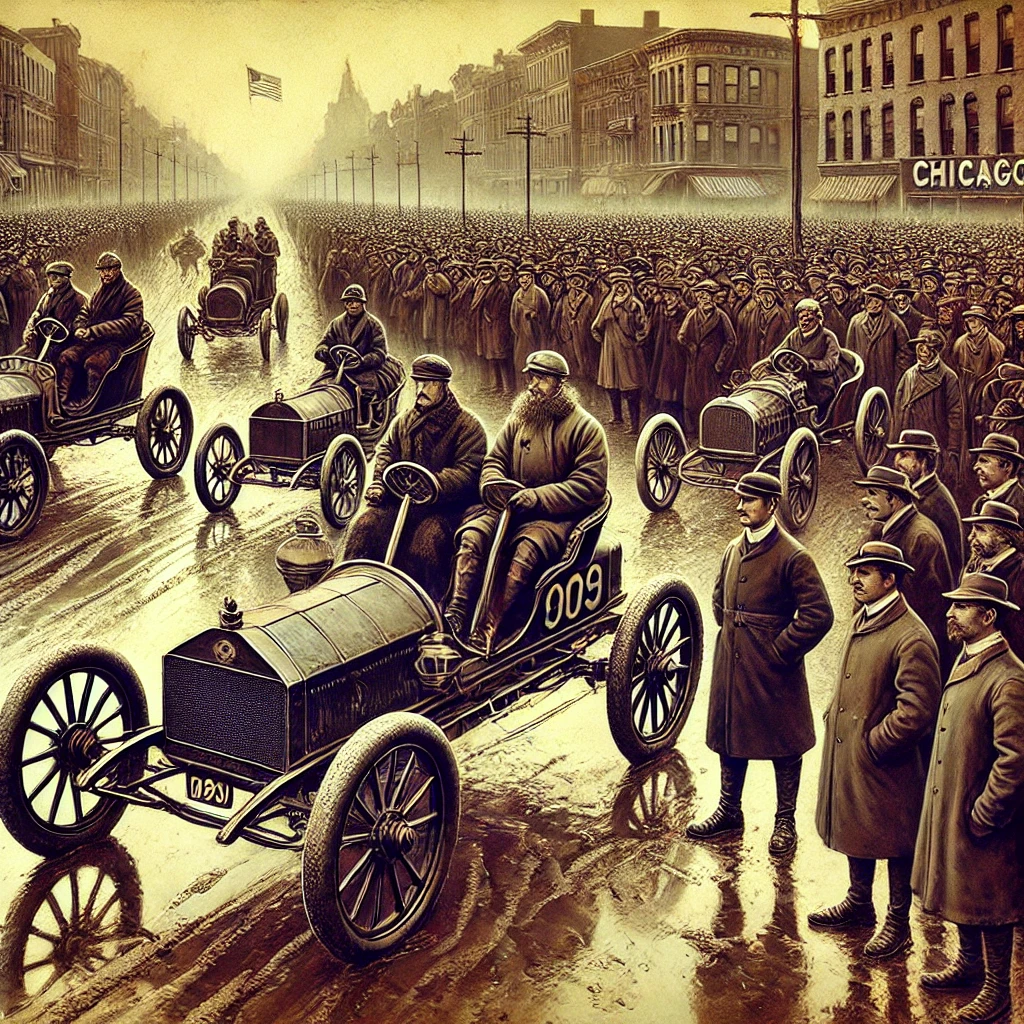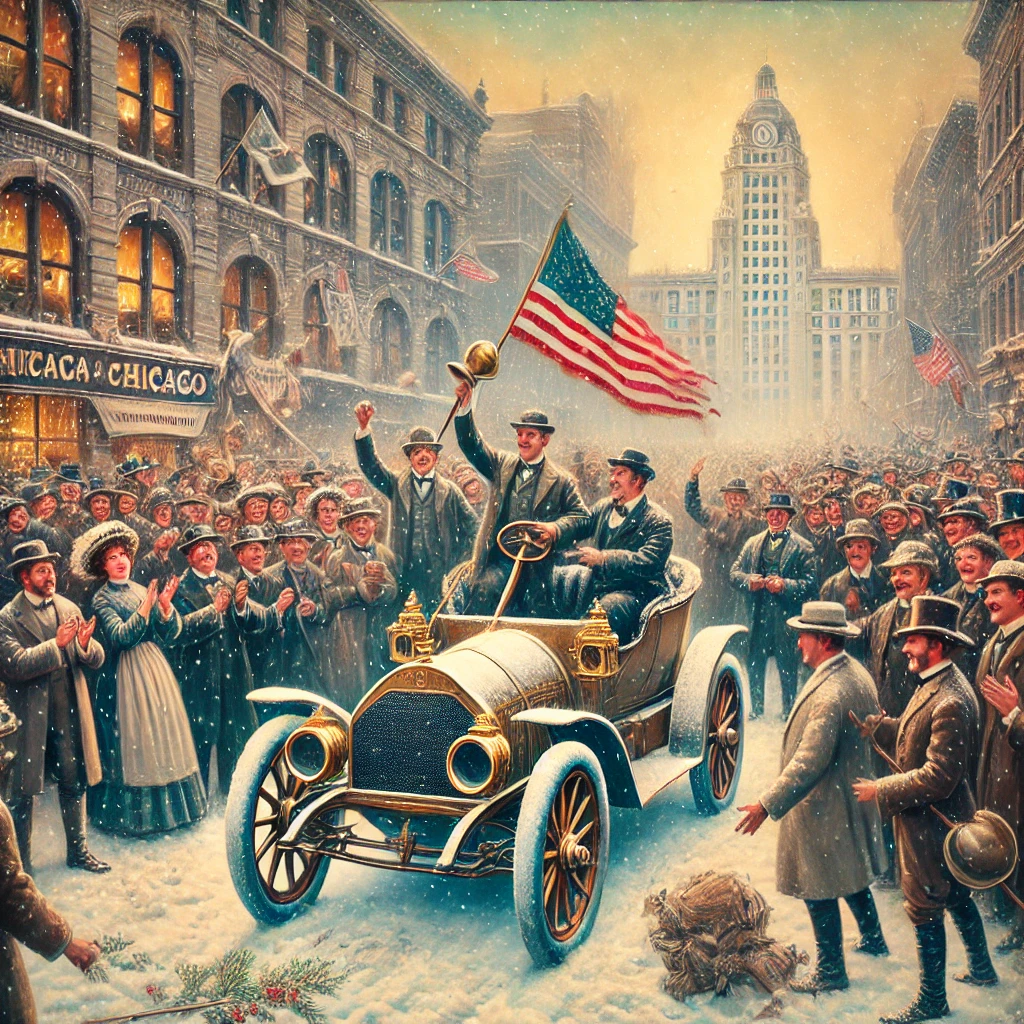On this day in 1895, six pioneering vehicles lined up in Chicago for what would become the first official automobile race in the United States. The race, organized by the Chicago Times-Herald, covered a grueling 54-mile course that stretched from Chicago to Evanston and back. Though modest by today’s standards, this landmark event marked the dawn of competitive motorsports in America, capturing the imagination of the public and setting the stage for the automotive revolution.

The Race That Started It All
In the late 19th century, automobiles were a fledgling innovation, regarded more as curiosities than practical vehicles. The Times-Herald race sought to promote public interest in the “horseless carriage” and test the feasibility of these machines. Despite harsh conditions, including freezing temperatures and muddy, unpaved roads, six vehicles braved the course. Frank Duryea emerged victorious, completing the race in just over 10 hours with an average speed of 7.5 miles per hour. The achievement was not merely a testament to engineering but also to human ingenuity and determination.
A Milestone in Automotive History
The first American auto race was more than a competition; it was a proving ground for the potential of the automobile. Frank Duryea’s success demonstrated the reliability of the internal combustion engine, a relatively new technology at the time. It also showcased the ability of these machines to handle challenging conditions, proving their practicality for everyday use. The race inspired a wave of innovation, encouraging inventors and entrepreneurs to refine their designs and expand the capabilities of early automobiles.

Moreover, the race’s publicity helped shift public perception. Cars were no longer viewed as impractical novelties but as viable alternatives to horse-drawn transportation. This event served as a catalyst for the rapid development of the American automotive industry, paving the way for companies like Ford and General Motors to revolutionize transportation in the coming decades.
The Legacy of November 28, 1895

Today, the legacy of America’s first auto race lives on in multiple ways. The spirit of competition birthed by this historic event continues to thrive in the world of motorsports, from the Indy 500 to NASCAR. Technological advancements that began in races like this have transformed not only cars but also modern engineering, shaping industries far beyond transportation.
The race also symbolizes the start of America’s love affair with the automobile, a cultural and economic phenomenon that has defined the nation’s identity for over a century. By pushing the boundaries of innovation and sparking widespread public interest, the Chicago Times-Herald race helped launch an era of progress and mobility that continues to impact our lives today.
As we look back on this milestone, it’s clear that November 28, 1895, was more than just a cold, muddy day in Chicago—it was the start of a journey that changed the way we move, connect, and explore the world.
